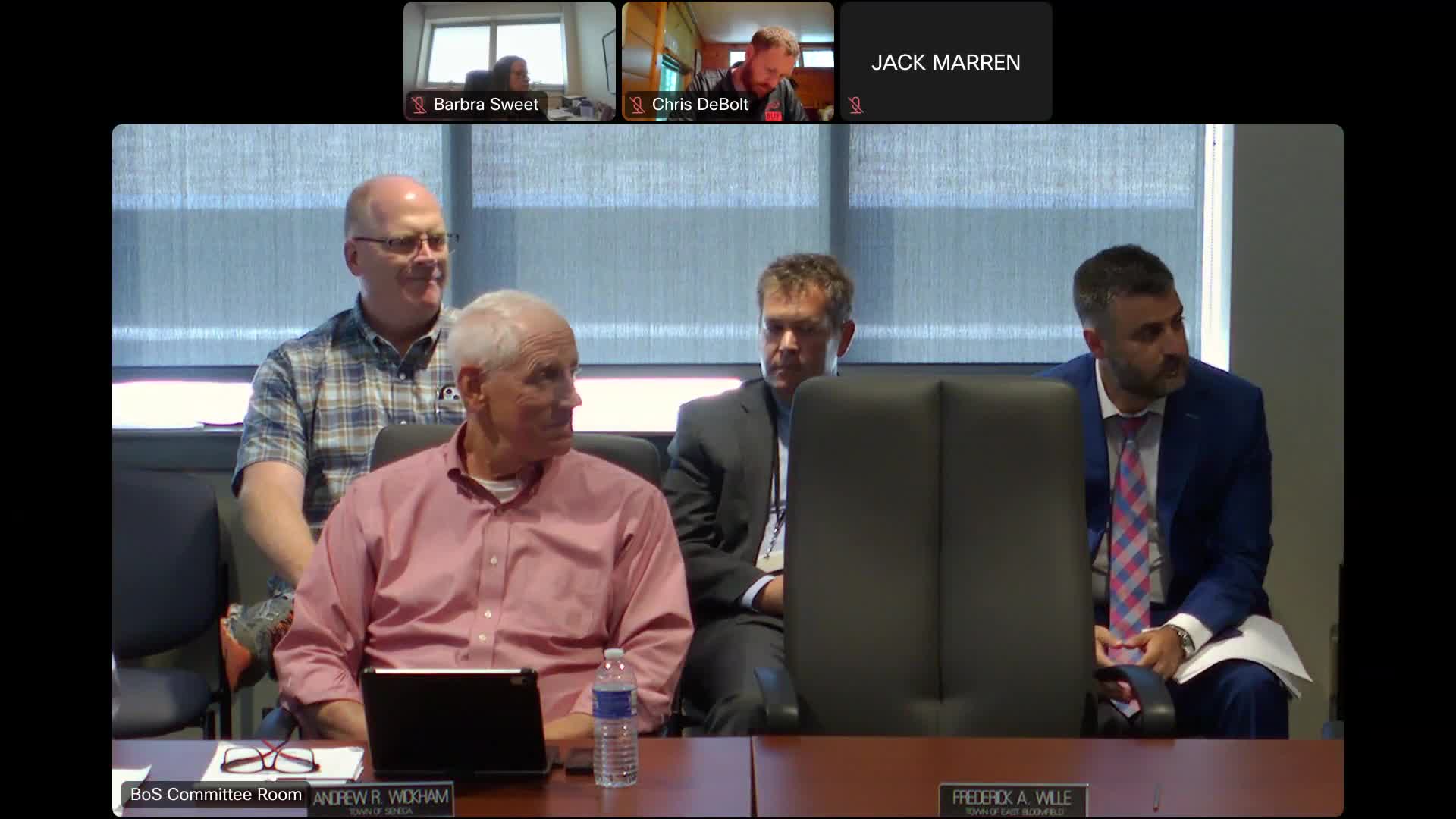Workers comp costs spark heated debate among local leaders
July 03, 2024 | Ontario, New York

This article was created by AI summarizing key points discussed. AI makes mistakes, so for full details and context, please refer to the video of the full meeting. Please report any errors so we can fix them. Report an error »

In a recent government meeting, officials discussed critical changes to the workers' compensation cost apportionment for local municipalities, focusing on the need for a resolution to address year-to-year increases. The county is tasked with charging back $2 million to towns, villages, and other entities for their workers' compensation costs, a figure that has raised concerns about fairness and financial impact.
The discussion centered around two proposed resolutions, with one aimed at smoothing the financial impacts of these costs over time. Officials noted that a local law currently caps any entity's increase at 100% from one year to the next, a rule that must be maintained according to legal advice. This cap is designed to prevent sudden spikes in costs that could severely impact municipal budgets.
The meeting highlighted the gradual adjustment process that has been in place since 2020, which was intended to mitigate the shock of rising costs. Officials presented spreadsheets illustrating the effects of capping versus not capping costs, revealing that fewer entities are hitting the maximum cap as adjustments take effect. The proposed cap for the upcoming year is set at 17%, a slight increase from previous years.
Concerns were raised about the fairness of the current system, particularly regarding municipalities that are expanding their services and staffing. Some officials argued that communities experiencing growth should bear the full costs associated with their increased workforce, rather than relying on a shared system that could disproportionately affect other municipalities.
The resolution to continue the smoothing process for another year was ultimately passed, with officials expressing a desire to revisit the local law in the future to address the concerns raised about staffing increases and their financial implications. The meeting concluded with a commitment to further analyze the impact of these changes and ensure equitable distribution of costs among all entities involved.
The discussion centered around two proposed resolutions, with one aimed at smoothing the financial impacts of these costs over time. Officials noted that a local law currently caps any entity's increase at 100% from one year to the next, a rule that must be maintained according to legal advice. This cap is designed to prevent sudden spikes in costs that could severely impact municipal budgets.
The meeting highlighted the gradual adjustment process that has been in place since 2020, which was intended to mitigate the shock of rising costs. Officials presented spreadsheets illustrating the effects of capping versus not capping costs, revealing that fewer entities are hitting the maximum cap as adjustments take effect. The proposed cap for the upcoming year is set at 17%, a slight increase from previous years.
Concerns were raised about the fairness of the current system, particularly regarding municipalities that are expanding their services and staffing. Some officials argued that communities experiencing growth should bear the full costs associated with their increased workforce, rather than relying on a shared system that could disproportionately affect other municipalities.
The resolution to continue the smoothing process for another year was ultimately passed, with officials expressing a desire to revisit the local law in the future to address the concerns raised about staffing increases and their financial implications. The meeting concluded with a commitment to further analyze the impact of these changes and ensure equitable distribution of costs among all entities involved.
View full meeting
This article is based on a recent meeting—watch the full video and explore the complete transcript for deeper insights into the discussion.
View full meeting
